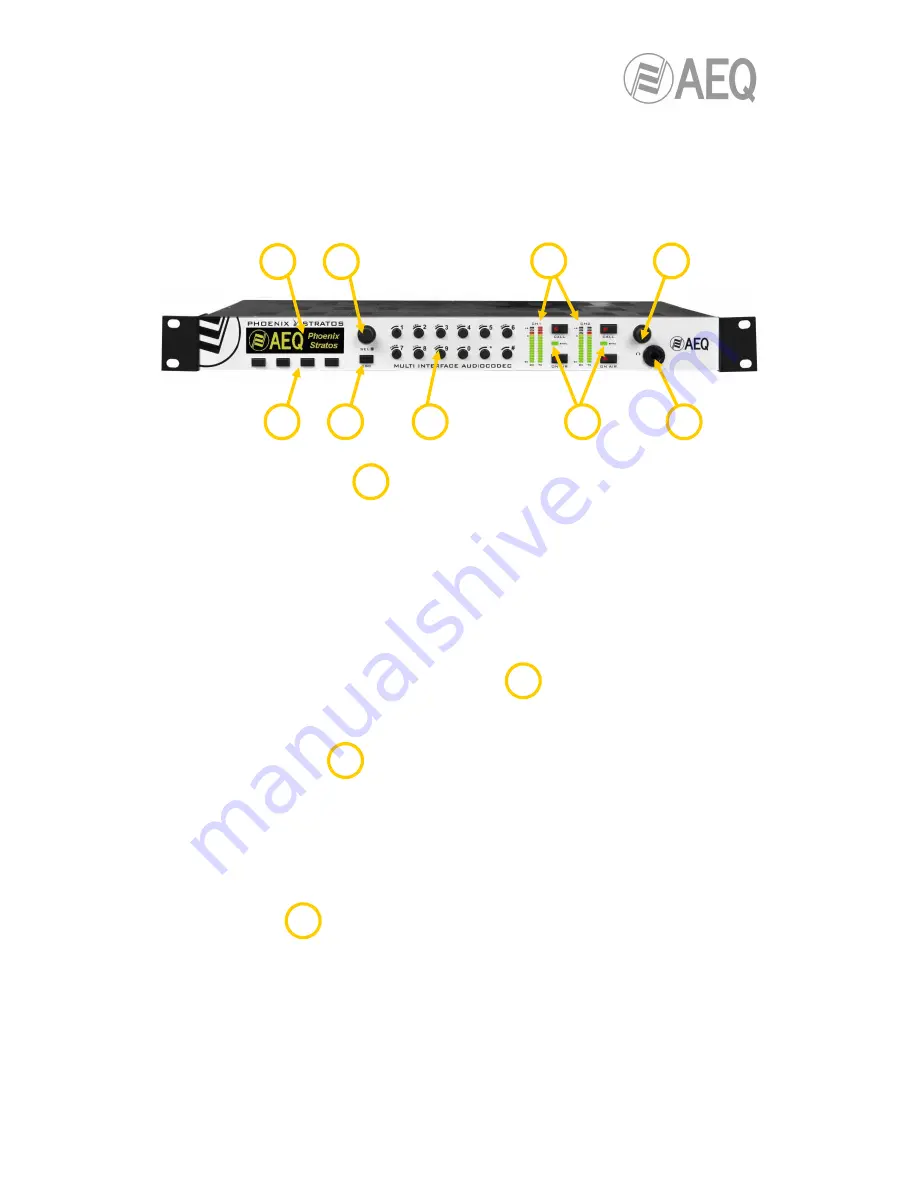
AEQ
PHOENIX STRATOS
10
2. PHYSICAL DESCRIPTION OF THE UNIT.
To understand how the PHOENIX STRATOS unit is wired and installed, you will first need to
familiarize yourself with the connectors and other configurable elements that are present on the
front and rear panels of the device.
2.1. Description of the front panel and controls.
2.1.1. Multifunction display.
High-contrast 256x64-pixel OLED screen in black and yellow. Within the internal menu, the
screen gives a generic display of three differentiated areas:
-
The upper area indicates the name of the menu where you will find the currently
displayed options.
-
The central area is associated with the various functions in whatever menu is currently
being displayed; it is also the area where notifications and messages are shown.
-
The lower screen area always shows options associated with the four lower keys that
function as contextual buttons.
2.1.2. Screen-associated keys / Contextual buttons.
Four multifunction buttons. Contextual operation depending on the menu options being
displayed on the last line in the multifunction screen at any moment.
2.1.3. Browsing encoder.
This enables cursor browsing in the various multifunction screen menus. Turning it makes the
selection on the cursor or highlighted on the screen of the options shown on the various lines of
the display, shifting from up to down and vice versa. Turning the encoder to the right raises the
cursor or highlighted element; turning it to the left lowers it.
Pressing the button allows you to validate the selection you currently have active on the cursor
or highlighted on the screen.
2.1.4. ESC button.
Performs the Escape function, enabling you to shift backward in the various multifunction
screen menus or cancel selections. Its operation produces the opposite effect of pressing the
browsing encoder; it returns you, in the multifunction screen, to the menu immediately previous
to the one currently being displayed.
RECOMMENDATION: by repeatedly pressing this key, a relatively untrained user will always
return to the initial system screen, regardless of the internal menu being displayed immediately
before pressing; no changes will be saved.
B
C
D
A
C
A
F
H
I
G
E
D
B











































